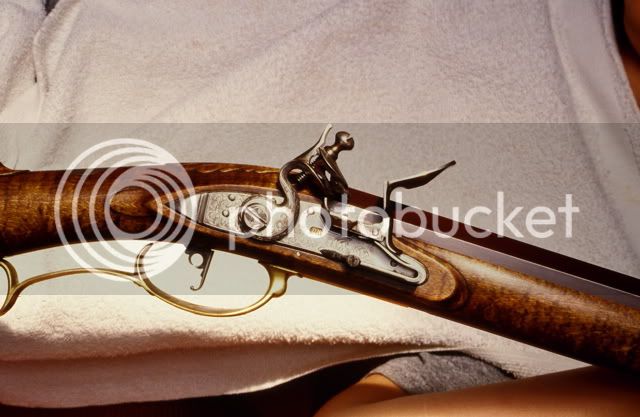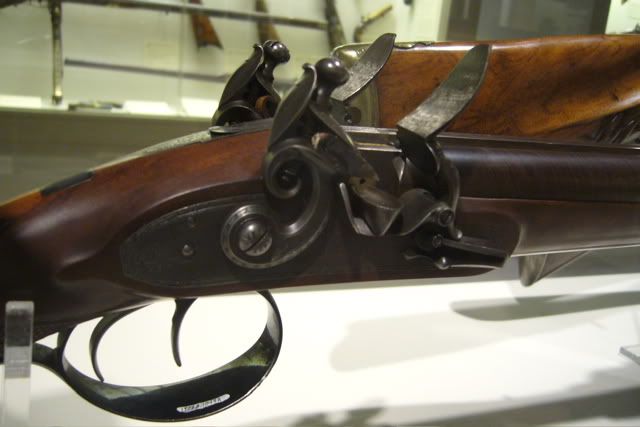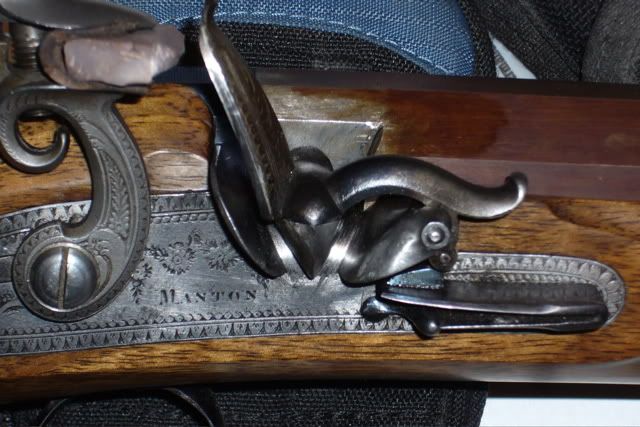A challenge to you Paul: send your lock or one that you claim to be faster than a percussion of ANY of the flintlocks tested by Larry to him (or to an independent lab) and have them SCIENTIFICALLY tested in the same way as the other locks have and prove your assertions.
Until such time as your tuned lock/s have been thus tested you have no scientific proof - only unsubstantiated human observation. It is scientific fact that the human eye and ear are incapable of discerning the extremely small, but measurable time differences that Larry has found in his testing and which you or others you know claim to have observed. Someone looking over your shoulder is NOT and cannot be a scientific test due to the human restrictions noted. Science/technology marches on and we should all be ready to accept what we once considered "facts", when good evidence to the contrary is discovered..........
While I have no doubt that the methods you tout have and can make certain locks work measurably "better" (then again so does any proper tuning), but until a lock tuned using those methods has been scientifically tested than there are no proofs that it is faster than any of the locks which Pletch has tested, flinter or percussion. And yes I have read that article and have also studied how to properly tune and build a lock from scratch from some of the best.
And yes the sparks do move faster than the cock (a good theory)- that can be observed by eye on many locks or in Pletch's slow motions films, but that alone does not prove that a flinter is faster than a percussion - the only real proof is how fast the main charge is ignited by the primer and that takes proper scientific testing, not just "eyeballing" something and that is just what Pletch has done with his testing.....
re: percussion locks - as with all locks it depends on the quality and build of the lock - most of the cheaper, especially many of the imported, commercial percussion locks have far too long a hammer throw and often soft springs, thus making them much slower than need be. On the other hand original percussion locks like my old 1850's Rigby sporter or a modern Bob Roller designed and built lock with their short throws and stiff springs is no comparison - they are FAST! On top of that most modern caplocks have mediocre to poorly designed breeches which contribute to slow or poor ignition. Comparing those less than optimum percussion locks to a properly tuned flintlock is like comparing a BMW to a Yugo...
FWIW - I've been shooting percussions since 1961 and flinters since 1963 and have owned some of the best of the best locks available including a couple of 1820's era Mantons flinters, that VERY few modern made locks can compare with and which would over a fair percentage of tested shots, fire without prime in the pan..that of course had to do not only with the speed of the locks (which incorporated short throw hammers and stiff, but balanced springs), but also the shape of the pan (full waterproof which was also designed to direct the sparks into the pan - something not observed until the first hi-speed photos of flinters were taken), the style of frizzen, and the breeching (Manton's inset, improved Nock style patent breech).
Bottom line - from a life long interest in how and why things work I appreciate Pletch's testing and the previous such testing by others which has led to some improvement in quality modern locks - on the other hand I'll still shoot my flinters and caplocks no matter what the tests "decide", so IMO there's no need to get one's knickers in a knot over thousandths of a second in difference....
With all due respect to everyone - I have no horse in this race - I do not NEED to prove anything either way, but IMO Paul the ball is in your court as to proving your assertions and that will take PROPER scientific testing and not just mailing a 30 year old article to folks.......
Until such time as your tuned lock/s have been thus tested you have no scientific proof - only unsubstantiated human observation. It is scientific fact that the human eye and ear are incapable of discerning the extremely small, but measurable time differences that Larry has found in his testing and which you or others you know claim to have observed. Someone looking over your shoulder is NOT and cannot be a scientific test due to the human restrictions noted. Science/technology marches on and we should all be ready to accept what we once considered "facts", when good evidence to the contrary is discovered..........
While I have no doubt that the methods you tout have and can make certain locks work measurably "better" (then again so does any proper tuning), but until a lock tuned using those methods has been scientifically tested than there are no proofs that it is faster than any of the locks which Pletch has tested, flinter or percussion. And yes I have read that article and have also studied how to properly tune and build a lock from scratch from some of the best.
And yes the sparks do move faster than the cock (a good theory)- that can be observed by eye on many locks or in Pletch's slow motions films, but that alone does not prove that a flinter is faster than a percussion - the only real proof is how fast the main charge is ignited by the primer and that takes proper scientific testing, not just "eyeballing" something and that is just what Pletch has done with his testing.....
re: percussion locks - as with all locks it depends on the quality and build of the lock - most of the cheaper, especially many of the imported, commercial percussion locks have far too long a hammer throw and often soft springs, thus making them much slower than need be. On the other hand original percussion locks like my old 1850's Rigby sporter or a modern Bob Roller designed and built lock with their short throws and stiff springs is no comparison - they are FAST! On top of that most modern caplocks have mediocre to poorly designed breeches which contribute to slow or poor ignition. Comparing those less than optimum percussion locks to a properly tuned flintlock is like comparing a BMW to a Yugo...
FWIW - I've been shooting percussions since 1961 and flinters since 1963 and have owned some of the best of the best locks available including a couple of 1820's era Mantons flinters, that VERY few modern made locks can compare with and which would over a fair percentage of tested shots, fire without prime in the pan..that of course had to do not only with the speed of the locks (which incorporated short throw hammers and stiff, but balanced springs), but also the shape of the pan (full waterproof which was also designed to direct the sparks into the pan - something not observed until the first hi-speed photos of flinters were taken), the style of frizzen, and the breeching (Manton's inset, improved Nock style patent breech).
Bottom line - from a life long interest in how and why things work I appreciate Pletch's testing and the previous such testing by others which has led to some improvement in quality modern locks - on the other hand I'll still shoot my flinters and caplocks no matter what the tests "decide", so IMO there's no need to get one's knickers in a knot over thousandths of a second in difference....
With all due respect to everyone - I have no horse in this race - I do not NEED to prove anything either way, but IMO Paul the ball is in your court as to proving your assertions and that will take PROPER scientific testing and not just mailing a 30 year old article to folks.......








